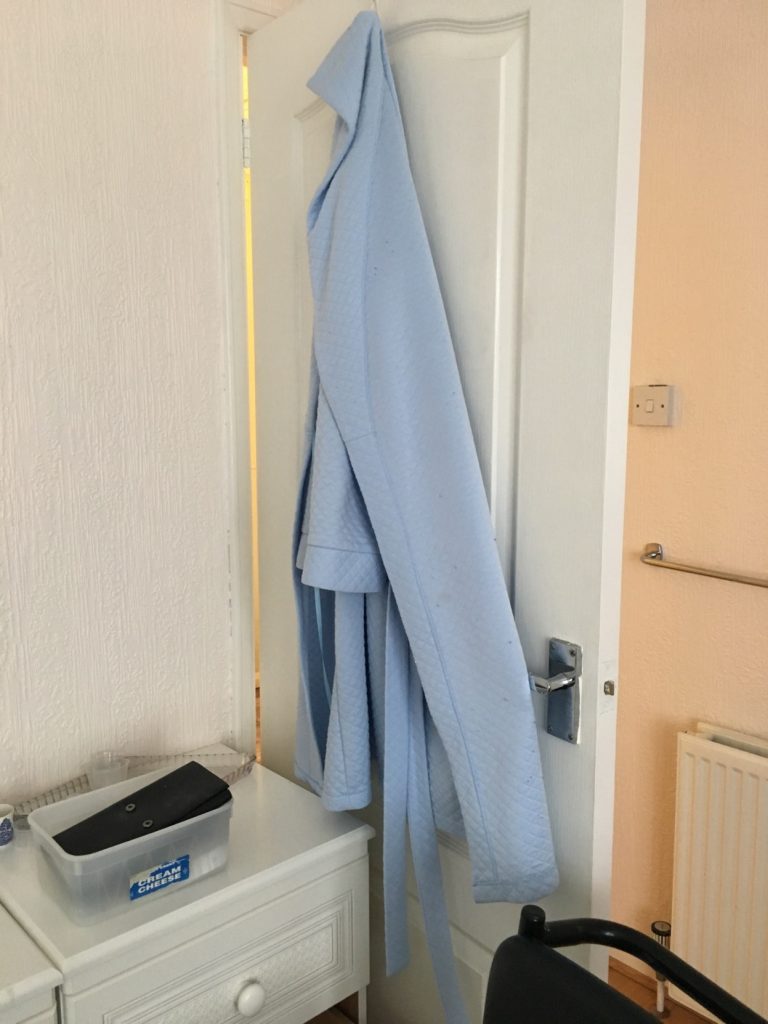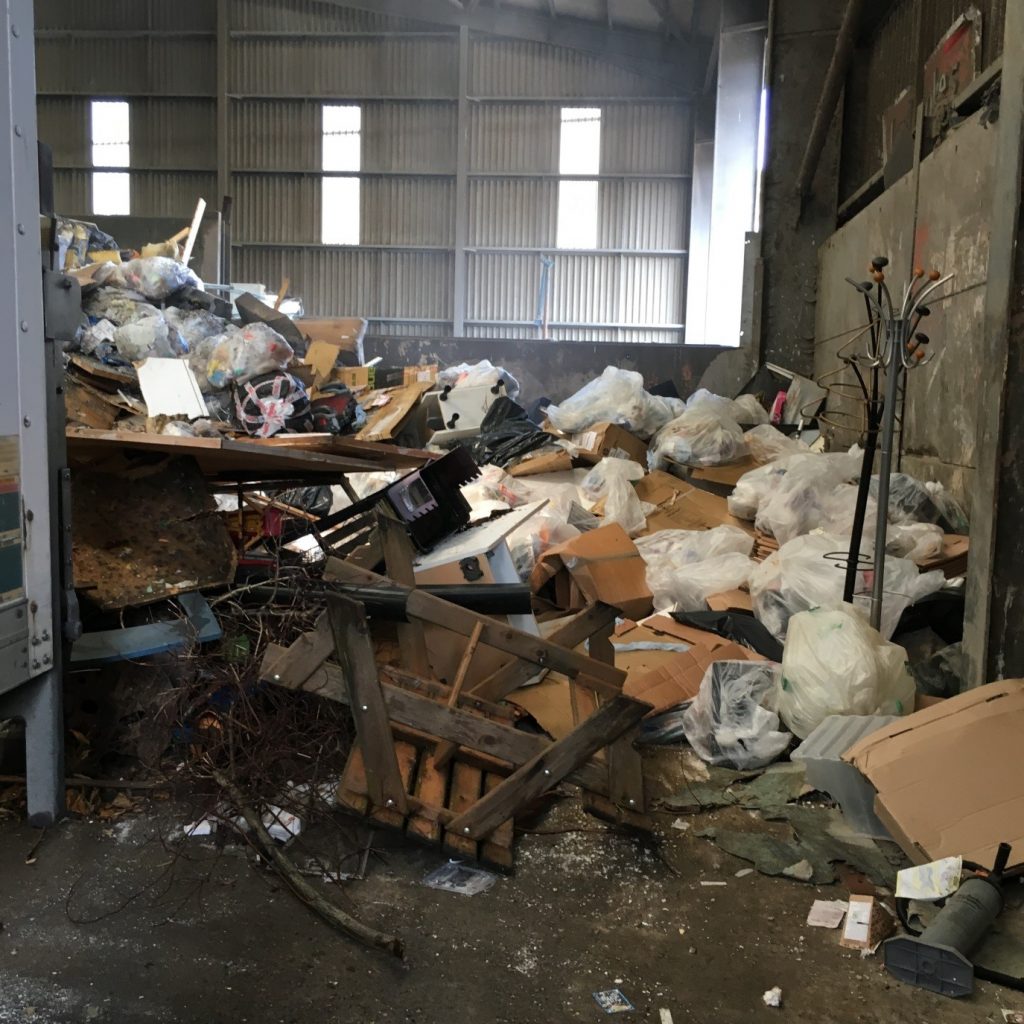Wardrobe Clearance: A Post-Mortem Methodology
Annebella Pollen, Professor of Visual and Material Culture, University of Brighton, UK
In 2019, I shadowed an English house clearance company who clear unwanted goods from homes to observe what happens to clothes at the end of a life, to understand commercial decisions about clothes’ value, and to follow garments’ afterlives. The company followed has a business model typical of the sector. Across a week, clothes are moved out of wardrobes, into the secondhand market, where they move through declining scales of value until they are given away for free. At the end of the process, unwanted garments are incinerated. This practice offers a microcosm of textile turnover; following each stage sheds light on how cultural and financial value is constructed, and how waste is classified and produced.

Methodology
The study followed a single company on a single job relating to a single person (a recently deceased widowed woman in her eighties). Using a social biography method – considering commodities as persons with social and cultural lives (Kopytoff 1986) – I followed the contents of this woman’s wardrobe, as her garments moved through sequential stages. To interpret the clothes and the process, I utilised a material culture methodology that foregrounds the things with which the social and cultural world is populated and with which it communicates. Objects’ movements, meanings and status shifts are shaped by their materiality; what they are made of and how they are made, by whom, matters.
I considered ‘the wardrobe’ not only as an assemblage of clothing but as a container of meaning and as a mobile site through which clothing flows. Gregson and Beale (2004) demonstrate the utility of social biographical approaches in garments’ existences and afterlives when they reflect on the mobilities of accumulation and divestment. “Clothes circulate”, they argue. “They have lives with their initial possessors and lives which may exceed them.” Woodward (2007) argues that worn clothing not only narrates the lives of its wearers in its use and disposal but, by extension, that individual garments can be read as material archives or indexes; together they form a body of biographical material.

The study was underpinned by empirical observation of disposal and dispersal at three key points—the cleared house, the waste processing site, and the reselling location — and by interviews with those who make choices about what to keep and what to trade, as well as with those who buy it and sell it on. All involved – wearers, sellers, users and destroyers – were anonymised.
Findings
The clothes were mostly daily wear designed for comfort, bought new from middle-market British high street locations, particularly Bonmarché. I researched Bonmarché business practices, particularly its connection to the Rana Plaza garment factory that collapsed to devastating effect in 2013 in Bangladesh, killing 1,134 people and injuring 2,500 more. I thus traced garments from their production site – wherever labour is cheapest – to their life in a British woman’s wardrobe, then back into the secondhand market, where they may be bought and used locally, or be picked up by low-paid migrant workers who ship garments back to the Global South.
The central garment case study was a stained polyester dressing gown. This was among the intimate wardrobe items selected by house clearers for waste processing; it did not even enter the secondhand circuit. As the clearer told me, it is more work to pack and unload such material, only to reload and dump it at the end of the market, than to dump in advance. I consequently examined garments whose meanings cannot be revalued in secondhand cultures of vintage shopping, typically bedwear, underwear and clothes associated with illness and death. I also scrutinised the dressing gown’s material, as a plastic polymer fibre garment whose deterioration is not marked by the wasted aesthetic effects of denim or leather, and which is not associated with garment recycling’s fashionable and pleasurable performances. As Stanes and Gibson (2017) observe, of artificial fibres in the recycling economy, “polyester’s materiality—its very plasticity— unleashes an unsettling set of contradictory relations” in its Western users and re-users, including discomfort, disgust, sweatiness and neglect. As such, polyester garments have become the overlooked stuff of fashion waste.
Implications
My study contributes new perspectives on the little-researched house clearance industry. While part of a wider secondhand practices that have been thoroughly documented, house clearances are particular. They can be unregulated operators at the bottom end of the secondhand chain, intersecting the antiques trade, refuse disposal and the death industry. Their operations may be opaque, but they are often the first brokers of goods as they move from first-hand usage to second-hand repurposing or disposal. The decisions clearers make about the value of clothing have fundamental effects on its later direction and meaning. The study also scrutinised garments that are not usually examined. Stained polyester bedwear is not a treasured item with vintage value; it lacks romantic patina. I argue, however, that is important to examine what is culturally unwanted. Together, my microcosmic study pays attention to bigger processes that are overlooked, whether for discretion, trade secrecy, or to hide the unpalatable truths of the global inequalities that sit beneath first world fashion pleasures.

The research was firstly shared at a 2019 Design History Society conference panel dedicated to understanding fashion practices beyond mainstream systems of financial value. It was adapted for the 2021 conference and 2022 JOMEC journal special issue on Secondhand Cultures in Unsettled Times. It has been used to provide wider context for the artistic practices of Lloyd Corporation, an artist duo who examine the cultural movement of goods outside the mainstream. This has taken the form of a talk accompanying a 2022 exhibition at Centre for Contemporary Art, Brighton, and a commissioned catalogue essay, ‘The Social Life of Unwanted Clothes’, for the exhibition’s reiteration at Carlos/Ishikawa gallery, London (‘Today’s Gift is Tomorrow’s Commodity. Yesterday’s Commodity is Tomorrow’s Found Art Object. Today’s Art Object is Tomorrow’s Junk. And Yesterday’s Junk is Tomorrow’s Heirloom’). Finally, it formed a contribution to the 2022-23 workshops, ‘Overcoming Secondhand Challenges’, organised at University of Cardiff, which brought together academics and secondhand stakeholders to consider ways to reduce waste, strengthen systems of repair, and build community in the sector.
References
Woodward, S. 2007. Why Women Wear What They Wear. Oxford: Berg.